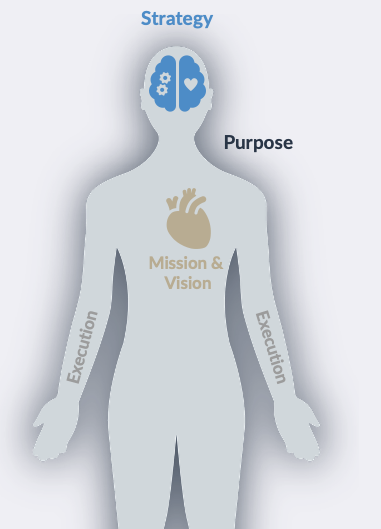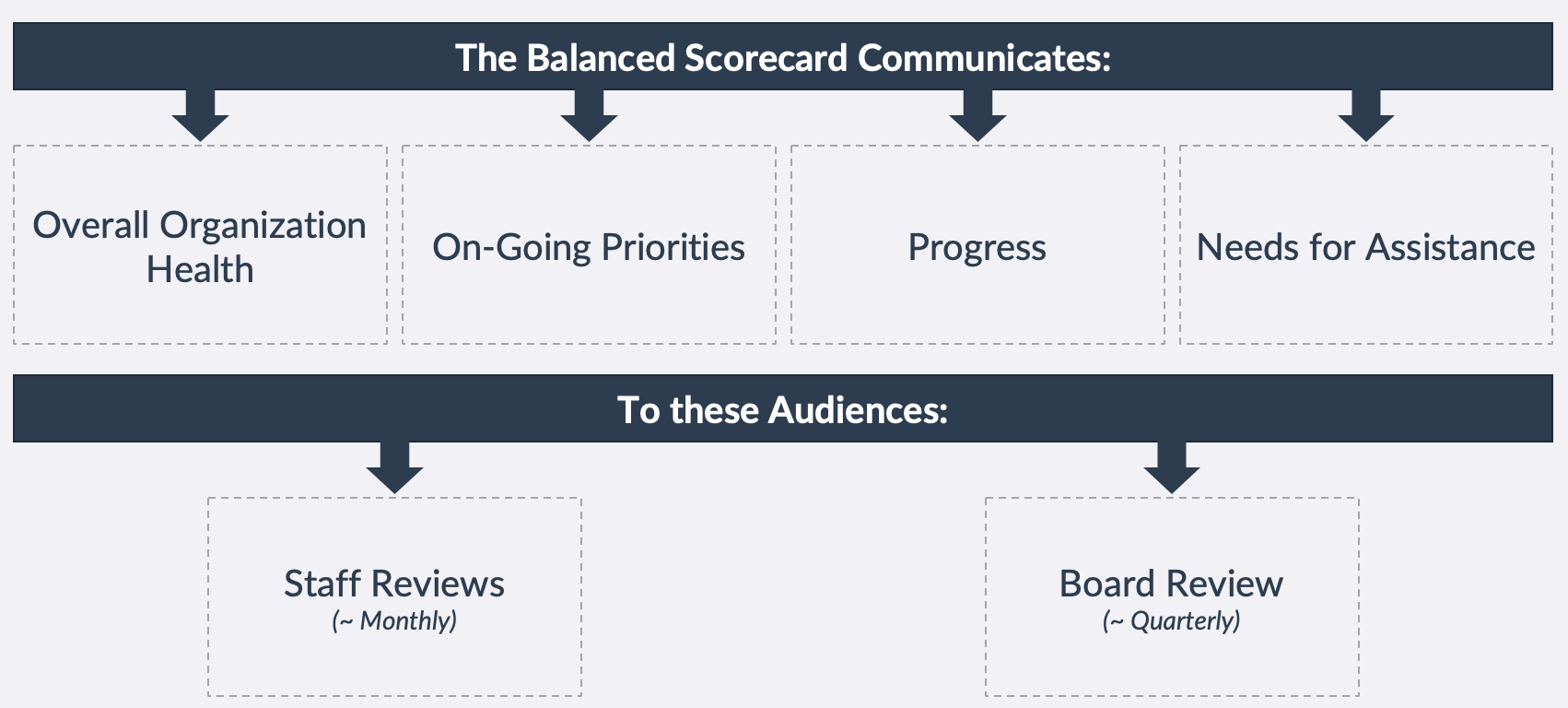How to Write a Winning Strategy: Best Practices from 100 Real-World Examples
A strategic plan is a roadmap that guides an organization’s long-term vision, decision-making, and resource allocation. It aligns mission, vision, and objectives with measurable actions, ensuring clarity, accountability, and progress.
To develop this guide, we conducted a thorough review of 100+ strategic plans across various industries, identifying the most essential components that contribute to a successful plan. By analyzing best practices and common pitfalls, we curated a streamlined approach that ensures strategic plans are both comprehensive and actionable.
This guide outlines the key elements of an effective strategic plan, beginning with establishing a strong foundation by defining mission, vision, values, and engaging stakeholders in the planning process. It then explores setting clear focus areas, objectives, and metrics to measure progress and ensure accountability. Finally, it emphasizes the importance of communicating and structuring the plan for clarity, engagement, and ease of implementation.
By following these best practices, organizations can create a clear, structured, and results-driven plan that is both effective and adaptable.
Establishing the Foundations
Before diving into the details, a strong strategic plan must be built on a clear foundation that aligns the organization’s goals, priorities, and values.

1. Ground the Plan in Purpose and Principles
A strategic plan should be anchored in an organization’s purpose, vision, mission, and values, as these elements define its identity, aspirations, and guiding principles. Clearly stating them at the beginning of the strategic plan ensures alignment, provides a shared understanding, and reinforces organizational identity.
- Purpose – The fundamental reason an organization exists beyond profit. It reflects the broader impact the organization seeks to make in the world and answers the question: “Why do we exist?”
- Vision – A forward-looking statement that describes what the organization aspires to achieve in the long term. It provides a clear picture of the desired future state, guiding strategic direction.
- Mission – Defines what the organization does, for whom, and how it delivers value. It serves as a practical roadmap for daily operations and near-to-medium-term goals.
- Values – The core principles and beliefs that shape the organization’s culture and decision-making. They define how the organization conducts business and interacts with stakeholders.
Example:
See how organizations effectively define their mission, vision, and values in the City/County Association of Governments of San Mateo County Strategic Plan 2024-2029, which provides a clear and compelling approach to aligning core principles with strategic direction.
2. Engage stakeholders in the Planning Process
Stakeholder engagement is essential to creating a strategic plan that is aligned, actionable, and widely supported. The level of involvement can vary depending on the organization, ranging from broad, community-driven participation to targeted input from key decision-makers.
- Broad Stakeholder Involvement –Organizations such as government agencies, public institutions, and universities often engage a wide range of stakeholders, including employees, students, community members, and community partners. This approach ensures transparency, builds public trust, and reflects diverse perspectives in shaping strategic priorities.
- Targeted Stakeholder Involvement – Private companies and corporate organizations typically involve a more focused group, such as executives, senior leadership, board members, and other key stakeholders, to define strategic priorities and ensure alignment with business objectives.
Example:
Stakeholder input is critical to building a strategic plan that fosters buy-in and long-term success. The Cleveland Operational Strategic Plan 2024-2034 demonstrates a strong engagement process, outlining how community members, employees, and strategic partners contributed to shaping the strategy.
Develop the Strategy Framework
After establishing the foundation of the plan, the next step is to define clear focus areas, goals and measures of success to track progress and ensure accountability.

3. Identify Key Focus Areas
Focus areas are the high-priority themes around which a strategic plan should be centered. These core strategic priorities shape an organization’s efforts toward achieving its mission and vision. To create effective focus areas:
- Keep Them Clear and Memorable – Use simple, concise language so focus areas are easy to recall and communicate.
- Avoid Over-Specification – Focus areas should define broad strategic priorities rather than narrow, tactical goals.
- Limit to 3-6 Focus Areas – Too many priorities can dilute efforts and overwhelm teams.
- Ensure Strategic Alignment – Each focus area should directly support the organization’s mission, vision, and long-term objectives.
Example:
Defining clear focus areas keeps a strategic plan aligned with organizational priorities. The Richland Area Chamber & Economic Development 2022-2025 Strategic Plan demonstrates how its focus areas, or "strategic priorities," drive the achievement of its vision and mission while shaping objectives for each priority.
4. Define Key Objectives
Objectives, sometimes referred to as goals, define specific, measurable results that an organization seeks to achieve within a given timeframe. They serve as a framework for planning and evaluating performance and should be:
- Actionable – Provide clear direction and specific steps for team members to take.
- Aligned with Purpose – Directly supports the organization’s mission, vision, and values, ensuring strategic cohesion.
- Clearly stated – Simple, concise, and easily understood by stakeholders at all levels.
- Attainable Yet Aspirational – Realistic given current resources, but ambitious enough to inspire progress and innovation.
- Measurable – Defined by clear metrics that allow for tracking progress and evaluating success.
Example:
Strong objectives are high-level and measurable goals that outline what an organization wants to achieve. The City of Raleigh 2021-2025 Strategic Plan illustrates how well-defined objectives guide initiatives and projects that are aligned with the company’s vision and mission.
5. Establish Key Measures of Success
Key Performance Indicators (KPIs) are measurable values that demonstrate how effectively an organization is achieving its key business objectives. They provide a way to track progress and assess whether objectives or goals are being met. To set up good KPIs:
- Align with objectives– Ensure KPIs are directly connected to a strategic objective to maintain relevance and clarity.
- Use SMART Criteria - Make sure KPIs are Specific, Measurable, Achievable, Relevant, and Time-bound.
- Set Clear Targets - Every KPI should have a numeric goal tied to a timeframe.
- Use Reliable Data Source – Identify a consistent and verifiable data source for each KPI to ensure accurate measurement and tracking.
Example:
Using KPIs effectively can transform a strategic plan into a powerful performance-tracking tool. The Central Highlands Regional Council Library Strategic Action Plan 2021-2026 highlights how clear, actionable KPIs align with objectives and drive accountability.
6. Monitoring and Accountability
Even the best strategic plans can fall short without consistent follow-through. Implementation often breaks down when there's no structure in place to track progress, evaluate outcomes, or reinforce responsibility. To avoid having your plan sit on a shelf, build a monitoring system that keeps it alive and actionable.
- Assign Clear Ownership – Ensure every objective and KPI has a designated owner responsible for tracking progress, reporting updates, and driving outcomes so members understand their role in achieving success.
- Use Dashboards to Track Progress – Implement a simple, visual dashboard that highlights key indicators on a monthly basis. This allows leaders and teams to stay focused, spot trends, and take timely action.
- Conduct Regular Strategy Reviews – Schedule regular check-ins—ideally every month or every quarter—to assess performance, celebrate wins, address challenges, and make course corrections based on what’s working and what’s not.
Example: The City of Waukesha Strategic Plan 2024-2029 offers a strong model of a multi-tiered monitoring structure. Staff meet monthly to review progress, leadership provides quarterly updates, and the city administrator delivers formal progress reports to the Common Council twice a year. An annual report is also shared with the public, ensuring transparency, celebrating wins, and reinforcing accountability across all levels of the organization
Structuring and Communicating the Plan
Even the best strategic plan can fail if it is poorly structured, overly complex, or difficult to follow. This section ensures the plan is clear, engaging, and easy to implement. After all, strategic plans are communications tools designed to inspire impact and alignment.

7. Make the Plan Easy to Read, Understand, and Use
Even the strongest strategic plan can fall short if it’s difficult to interpret or navigate. A well-crafted plan should use clear language, consistent terminology, and thoughtful formatting to promote shared understanding and support implementation.
- Define Key Terms Up Front – Provide concise, consistent definitions for frequently used terms to promote shared understanding and reduce misinterpretation across departments and stakeholder groups.
- Use Headings and Subheadings – Organize sections logically to guide readers through the plan and improve navigation.
- Incorporate Bullet Points – Break down complex ideas into digestible, easy-to-scan lists for clarity and quick reference.
- Leverage Visual Elements – Utilize infographics, charts, and diagrams to present data, illustrate relationships between objectives and actions, and summarize key insights in a visually compelling way.
Example:
The Banco de España Strategic Plan 2024 offers a strong example of thoughtful formatting that enhances both usability and comprehension. The plan uses clean formatting, clear headings, and side bar navigation to guide the reader through each section. Under each objective, neatly organized tables help convey action plans and initiatives in a digestible and engaging way.
8. Strike a Balance Between Direction and Detail
A strategic plan should be detailed enough to provide clear direction but concise enough to remain actionable. While the ideal length of a strategic plan can vary, aiming for conciseness and clarity is key, with a focus on conveying the core strategy and action plan.
- Prioritize Essential Content – Highlight core goals, priorities, and action steps. Eliminate unnecessary background details that don’t directly support the strategy.
- Use Supplemental Material Wisely – Place supplementary data, research, or detailed analyses in appendices rather than the main body of the plan.
- Utilize a Layered Approach – Consider creating different versions of the plan tailored to meet the needs of various audiences, such as a high-level executive summary for external stakeholders and a detailed operational guide for internal teams and managers.
Example:
An effective strategic plan provides enough detail for clarity without becoming overwhelming. The Port of Tacoma’s 2021-2026 Strategic Plan showcases a well-balanced approach, delivering comprehensive content in a concise, digestible format.
9. Create a Strategy-on-a-Page (SoaP)
A Strategy-on-a-Page (SoaP) distills the key components of the strategic plan into a concise, easy-to-reference document. This high-level overview ensures that leaders, stakeholders, and employees can quickly grasp the organization’s direction, priorities, and key initiatives to maintain alignment.
- Highlight Core Elements – Focus on mission, vision, values, focus areas, and objectives when creating your SoaP.
- Ensure Clarity and Precision – Use concise language, break down complex ideas, and remove redundant or overlapping information to enhance readability and focus.
- Design for Simplicity and Impact – Structure the SoaP in a visually compelling layout that makes strategic priorities easy to understand, remember, and communicate across all levels of the organization.
Example:
A one-page strategy summary can help stakeholders quickly understand key priorities. Habitat for Humanity of Douglas County, Minnesota’s 2024-2028 Strategy-on-a-Page is a great example of a visually compelling, high-impact summary that reinforces strategic focus.
10. Use Storytelling to Build Understanding and Ownership
Strategic plans often fail not because they lack good ideas — but because they fail to connect with the people responsible for bringing them to life. Too often, these plans are filled with abstract language and metrics but miss the opportunity to engage hearts and minds. Storytelling helps bridge that gap by making strategy personal, memorable, and actionable. To integrate storytelling into a strategic plan:
- Share the “Why” Behind the Strategy - Help stakeholders understand not only what the organization is doing, but why it matters.
- Celebrate Stories that Reflect the Strategy – Highlight real examples of employees and teams bringing the strategic plan to life.
- Use Authentic Language – Replace generic, corporate phrases with human-centered language. The more relatable and memorable the language, the more likely it is to be embraced.
- Use Multiple Formats – Combine verbal narratives with visuals such as photos or videos to create a more engaging and memorable experience.
- Highlight Milestones - Highlight milestones along the journey—such as anniversaries, achievements, or events—to reinforce progress and foster shared ownership of the plan’s success.
Example:
Education Cannot Wait’s 2023-2026 Strategic Plan offers a powerful example of storytelling in action. The plan communicates a strong sense of urgency about delivering education in crisis settings and uses visuals and video to reinforce its core message. It includes compelling images, personal stories, and progress highlights to humanize the work and inspire stakeholder support. The result is a strategy that feels alive—rooted in purpose and powered by people.
Conclusion
A well-crafted strategic plan is more than just a document—it’s a dynamic framework that aligns stakeholders, clarifies priorities, and drives accountability and measurable progress. Through an in-depth review of strategic plans across industries, we identified what leads to success and what pitfalls to avoid, allowing us to distill the most effective planning principles into this guide. By following these best practices, organizations can develop a clear, structured, and results-driven strategic plan that is both effective and adaptable. But a successful plan doesn’t end with documentation—it continues through thoughtful execution. By aligning resources, assigning accountability, and consistently monitoring progress, organizations can bring their strategic vision to life.
Sign UP to receive related Insights
Related Case STudies
View case studiesSchedule Your Session Today
Enter your information below and our team will contact you.












